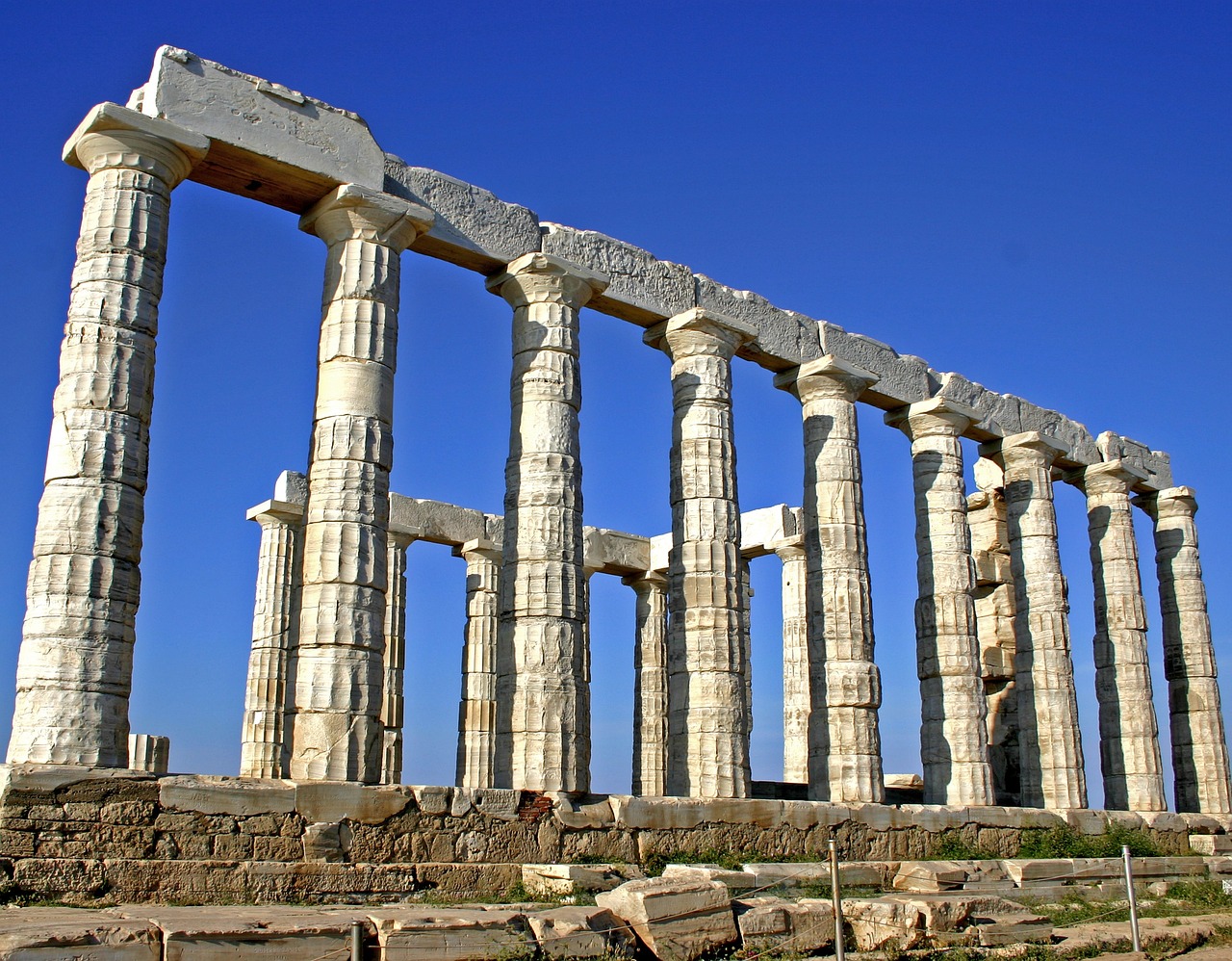Poseidon: The Olympian God of the Sea
Poseidon, a prominent figure among the Olympian gods, was revered as the god of the sea, earthquakes, floods, droughts, and horses. He is typically depicted as a robust, mature man, sporting a dark beard and wielding a trident, a three-pronged spear used by fishermen.
Myths Surrounding Poseidon
Poseidon’s early life was fraught with peril; he was swallowed by his father, Kronos, but was later rescued by Zeus, aided by the goddess Metis, who provided a magical potion that prompted the Titan to release him. In the significant conflict known as the Titanomachy, Poseidon, equipped with a magnificent trident created by the Cyclopes, fought alongside Zeus and Hades to overthrow the older gods, resulting in their imprisonment in Tartarus.
After the defeat of the Titans, Poseidon, Zeus, and Hades drew lots to determine their realms, and Poseidon secured the oceans as his dominion. His prowess as a warrior was evident during the Gigantes’ assault on Olympus, where he famously buried the giant Polybotes beneath the island of Kos.
In a famous contest for control over Athens against Athena, Poseidon offered the first horse but was ultimately denied the victory. In retaliation, he unleashed drought upon the land. Poseidon’s amorous nature is highlighted in various myths, where he often took on animal forms to seduce many nymphs and mortal women, such as Medusa, Tyro, and Aithra, the mother of Theseus.
One of his notable constructions was the walls of Troy, which he helped to build. However, when King Laomedon failed to compensate him, Poseidon unleashed a sea monster that ravaged the coastal lands. His anger didn’t stop there; when Odysseus blinded his son, Polyphemus, Poseidon caused severe storms to impede Odysseus’s journey home from Troy.
Symbols and Attributes
The most iconic symbol associated with Poseidon is his trident, which he used to create storms, shatter rocks, and stir the seas. In ancient art, he might also be portrayed alongside various marine creatures, as well as in a billowing cloak or nude, adorned with a wreath of wild celery.
Poseidon was known for several sacred animals — including dolphins, bulls, and horses — and he famously had a chariot drawn by hippocamps, half-horse, half-fish creatures. His sacred plants were primarily the pine and wild celery, often used in athletic competitions in his honor.
Family and Lineage
Poseidon’s lineage traces back to the Titans Kronos and Rhea, making him a brother of Zeus, Hades, Hera, Demeter, and Hestia. He wed the sea goddess Amphitrite, and together they had Triton and other lesser-known offspring. In addition, Poseidon fathered numerous children with both divine and mortal women, including giants like Antaios and cyclopes such as Polyphemus.
Poseidon’s Role in Myths and Literature
The character of Poseidon embodies both the chaotic and benevolent aspects of the sea. He was known to control tempests, yet also granted safe passage to sailors. His disputes with other gods exemplified his assertive nature; for instance, he once sought to claim Attica but lost the contest to Athena when she produced the olive tree.
His duality is reflected in various tales of aggression and kindness, whether it was assisting the Greeks against the Trojans during the Trojan War or thwarting Odysseus for blinding his son. Poseidon’s influence extended across Greek mythology and literature, showcasing his complex character as both a protector and a wrathful deity.
Art and Representation
In classical art, Poseidon is often recognizable by his trident and associations with marine life, frequently depicted with Amphitrite and other sea deities. His character can be portrayed in serene moments as well as in a tempestuous state, paralleling the unpredictable nature of the sea itself.
Over the centuries, Poseidon was equated with the Roman god Neptune but retained many of his Greek attributes. The legacy of Poseidon endures through art, literature, and mythology, symbolizing the unpredictable nature of the ocean and its divine ruler’s might.



